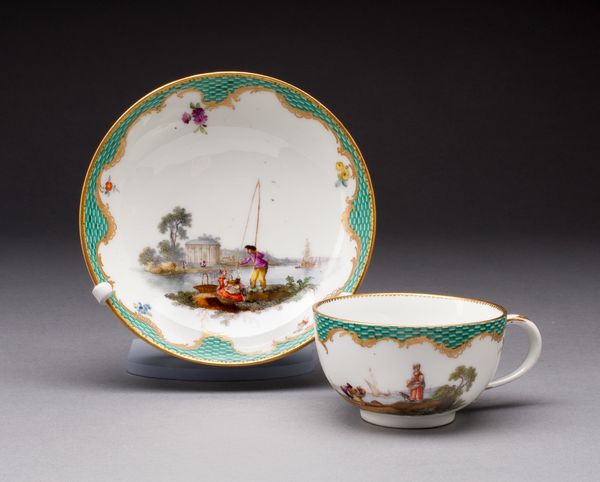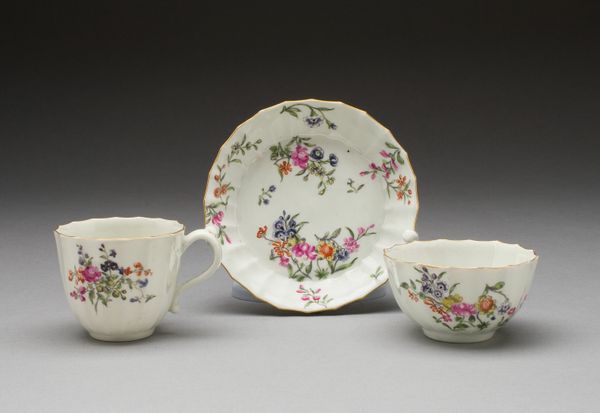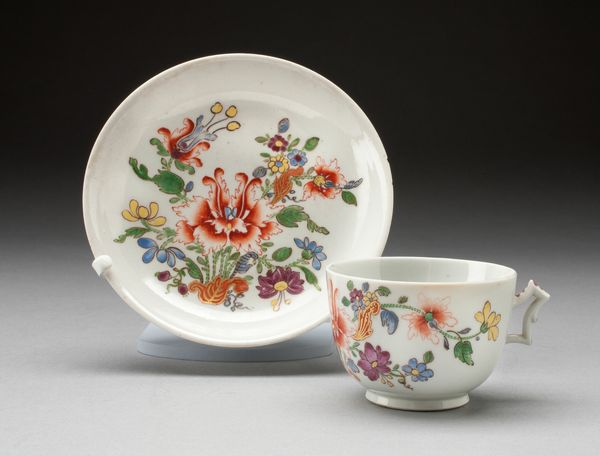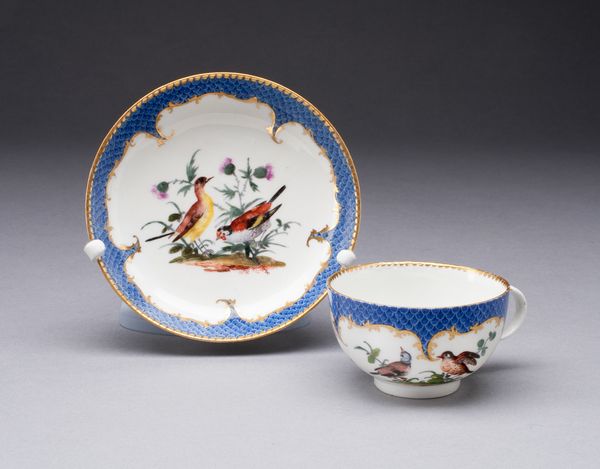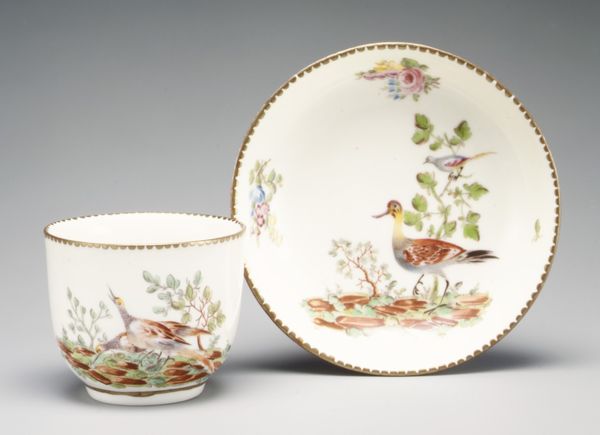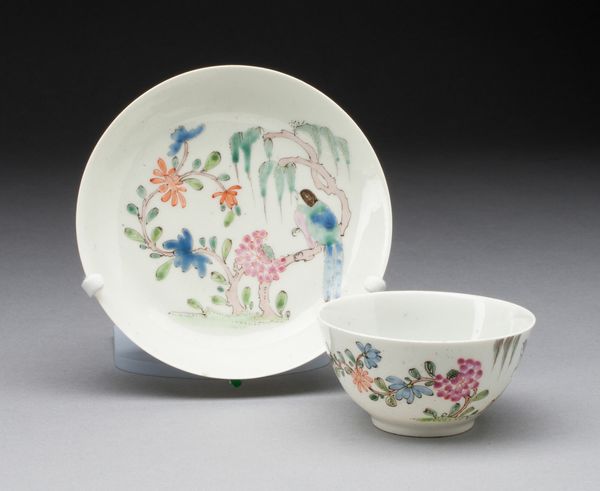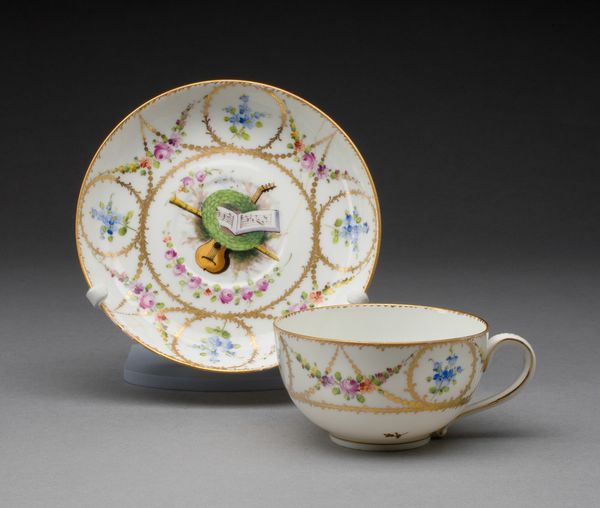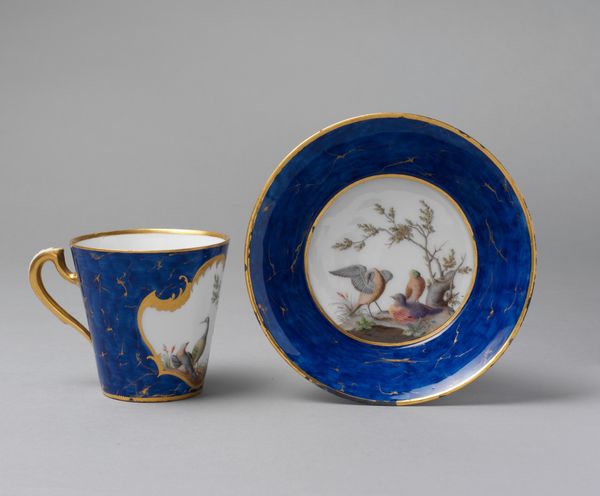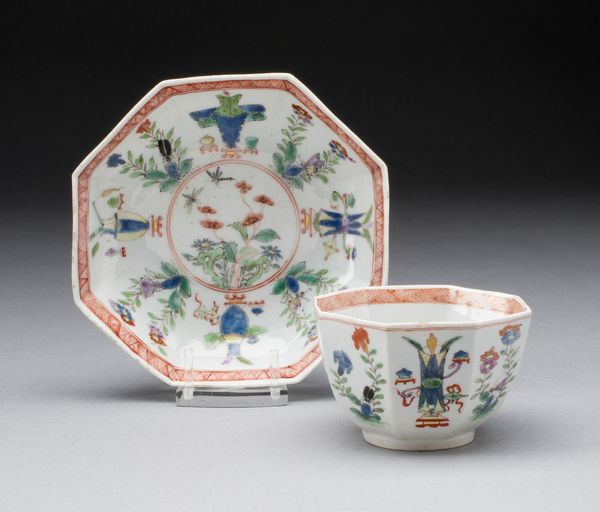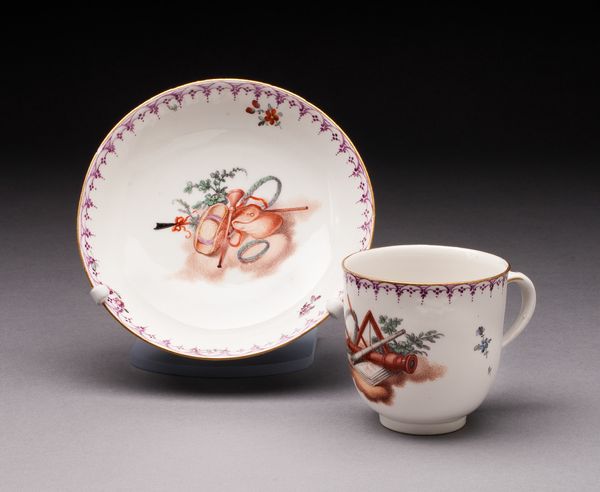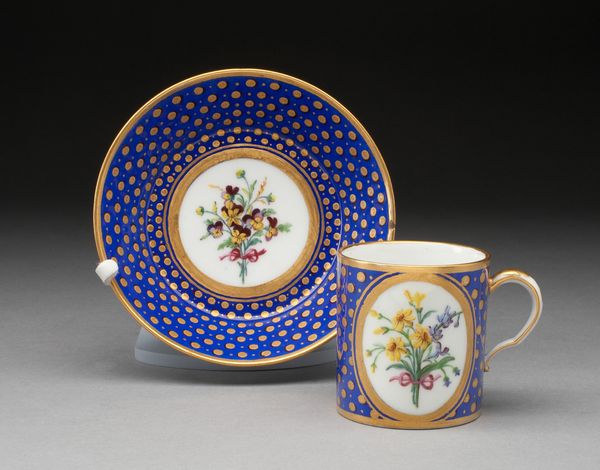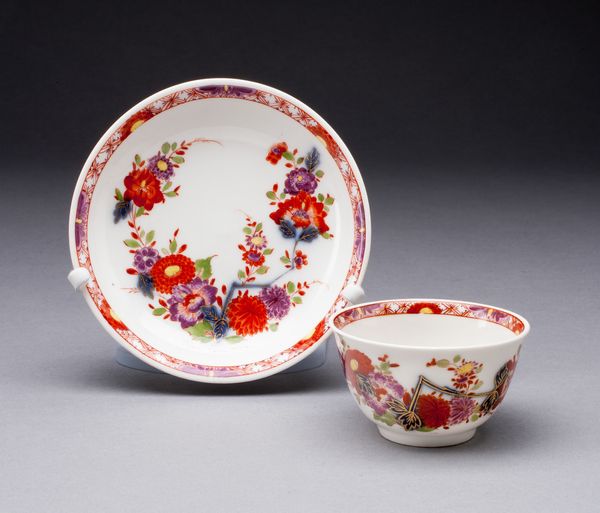
ceramic, porcelain
#
ceramic
#
porcelain
#
ceramic
#
decorative-art
#
rococo
Dimensions: Cup: H. 6.7 cm (2 5/8 in.); diam. 6.4 cm (2 1/2 in.); Saucer: diam. 14 cm (5 1/2 in.)
Copyright: Public Domain
Curator: It’s delightful, isn't it? This cup and saucer was produced around 1770 by the Höchster Porzellanmanufaktur GmbH. Both pieces are rendered in fine porcelain. Editor: My first thought is that it evokes such delicate privilege. The pastel colors and detailed renderings of fruit and birds are almost overwhelmingly precious. Curator: Precious, yes, and entirely intentional. These pieces emerged during the Rococo period, which favored asymmetry, grace, and elegance – values reflected in aristocratic society at the time. How fascinating to consider these porcelain artworks within the context of class. Porcelain itself was highly prized, wasn’t it? What statement was being made through its ownership? Editor: Absolutely. Porcelain operated as a potent signifier. The ruling classes cemented their power through visual extravagance—emphasizing distance from the laboring population who produced everything, and indeed lacked any parallel consumption opportunity. Did the imagery carry a deliberate message beyond a signifier of pure wealth? Curator: I think we need to examine the symbolism further. The motifs of birds and fruit, meticulously painted on both the cup and saucer, evoke notions of abundance and perhaps even earthly paradise, subtly reinforcing a sense of divinely ordained right to opulent enjoyment of life. In our present context of material ethics, how can this function today? Editor: Exactly. Looking at the history of production and consumption gives it a much sharper edge now. This is not mere frivolity; these objects actively participated in constructing and communicating power, wealth, and exclusion in the 18th century. We, today, should grapple with how such privilege reverberates across time. Curator: An important note, and especially considering these porcelain items are now housed within an institution supported by public funding and visitor engagement. Thinking about it, viewing them in such proximity also shifts that earlier symbolism and association. Editor: Precisely! Hopefully, we have provided food for thought during this tour of ceramic and porcelain work! Curator: A stimulating start for our listeners indeed.
Comments
No comments
Be the first to comment and join the conversation on the ultimate creative platform.

